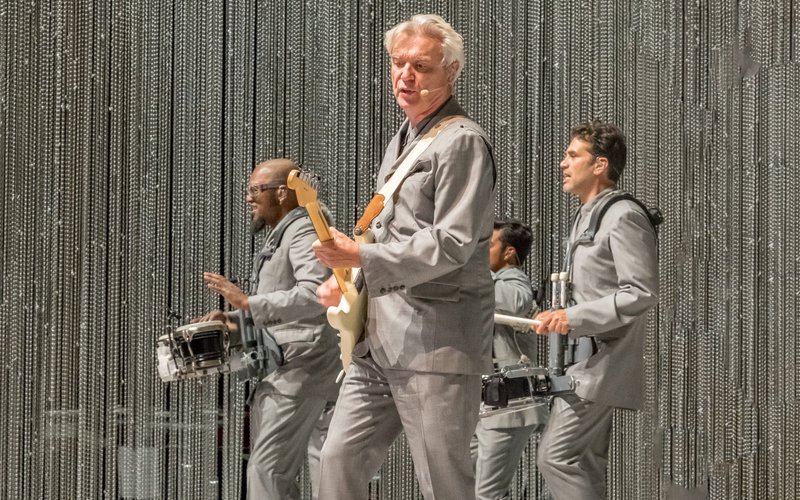
On May 24, David Byrne played The Paramount Theater, as part of his extensive American Utopia Tour. Byrne was joined by an excellent twelve piece band, which bolstered his sound and complex message about the continued relevance of cross-cultural musical communication, and the state of racism in modern society. Touring behind his 2018 record American Utopia, Byrne seemed energized and motivated by the musicians that surrounded him, frequently delighting in their musicianship. Following his recent detour to the world of musical theater with Here Lies Love, Byrne's live show had the level of visual panache and intricate coordination of a stage production. While the musical arrangements drew from traditions of improvisation, every song had a thoroughly choreographed visual approach that further articulated Byrne's message.
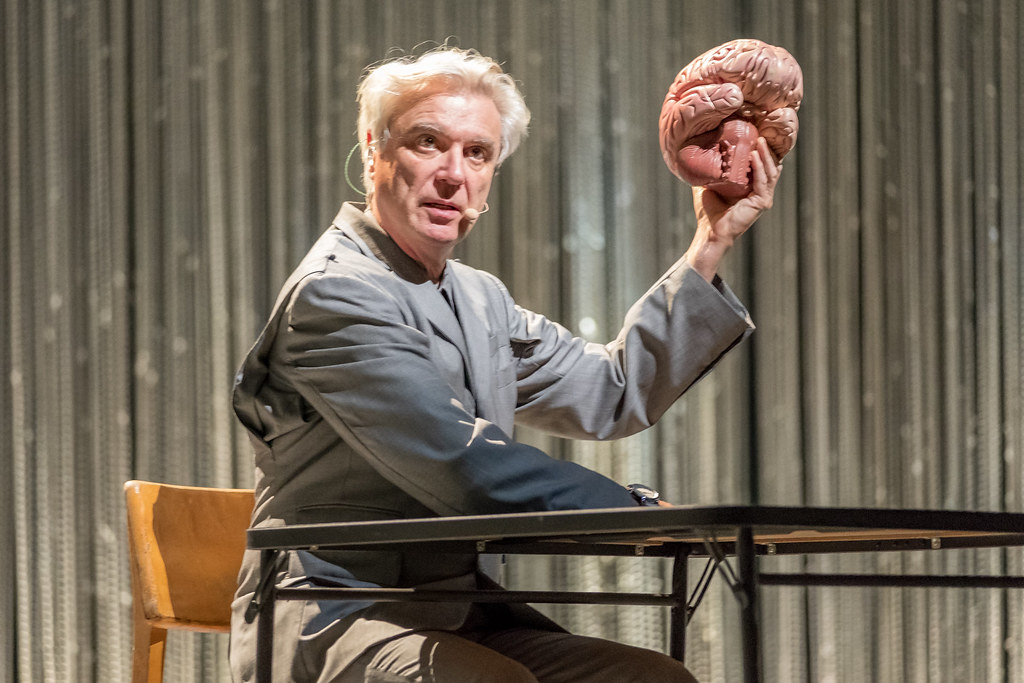
American Utopia was made with a number of collaborators, including Brian Eno (with whom Byrne co-wrote the majority of the tracks), Oneohtrix Point Never, and Sampha, among others. While much was made preceding the release of Byrne not collaborating with female musicians on American Utopia, Byrne seems to have taken representation more into account when putting together his stellar band on the American Utopia tour. Many of the musicians come from different musical traditions than Byrne, and a number are women or femmes of color. This is, of course, a deliberate political decision on the part of Byrne, who is more effectively able to engage with issues of police brutality, and the constant mourning characteristic of black life in America (to paraphrase poet Claudia Rankine), alongside musical collaborators who experience this firsthand. Byrne greatly benefits from being joined by immensely talented voices and performers, who are each given the space to be seen, heard, and appreciated on a very large stage.
Many reviews of American Utopia focused on the unevenness of the album's execution-- it bursts at the seams with ideas and styles, which can admittedly become muddled. In addition, the record is knowingly dischordant. Some tracks offer glimpses of bliss ("Everyday is a Miracle," single "Everybody's Coming To My House"), while others undermine and contradict the visions of a nonexistent American utopia ("Gasoline and Dirty Sheets," "Bullet"). Byrne's approach correctly suggests that utopia is built on exclusion, and explores the contradictions imiplicit in the American Dream, but some tracks feel naive to the point of irritation, especially when contrasted with bursts of violence. Nevertheless, Byrne's ambition and sonic collage should be applauded in spite of its flaws, especially for its heart. In addition, Byrne's interweaving of many global musical traditions feels more like an active conversation when performed live with a wealth of exuberant collaborators.
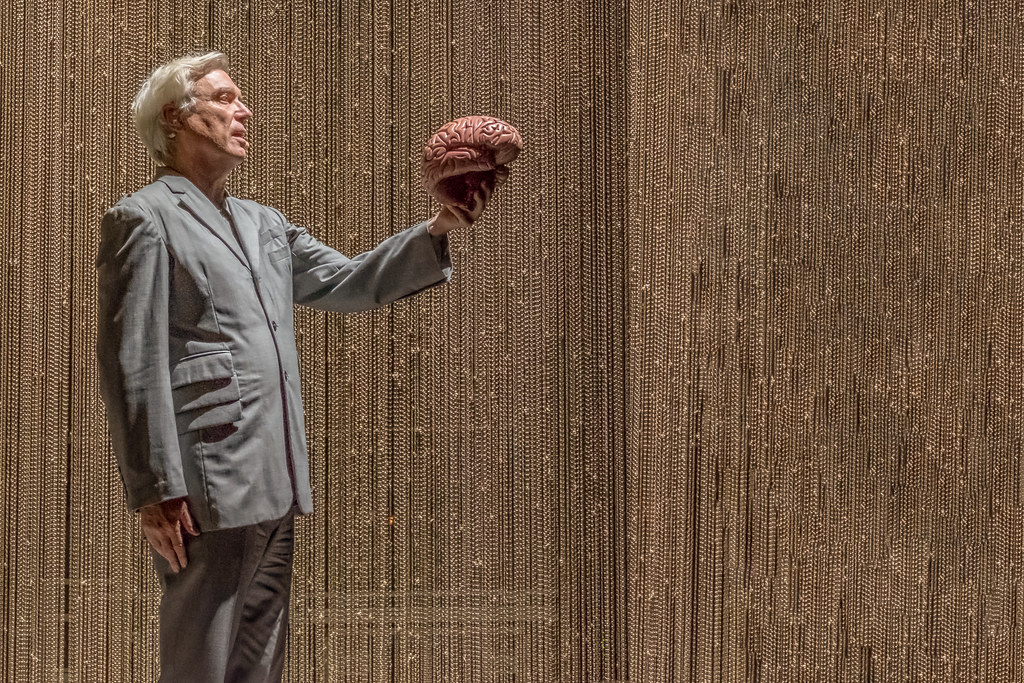
Byrne's Paramount set began with him sitting alone at a table, clad in a grey-brown suit, a model of a brain sitting before him, streams of light rising around the stage, as he sang American Utopia highlight "Here." The crowd, thoroughly excited all performance long, intermittently burst with applause as more musicians joined Byrne on stage, starting with Chris Giarmo and Simi Stone, who acted as combination backup singers and Greek choir. By the end of the song, he had been joined by percussionists, bass, guitar, and keyboard. Grown Backwards's "Lazy" followed, one of several Byrne solo cuts that felt invigorated by a live re-interpretation. The 12-piece band was constantly in motion, different musicians stepping to the front of the stage, Byrne moving about like a mad scientist or circus ringmaster. This movement was perfectly blocked out so every member of the production stayed visible. A joyous rendition of Fear of Music's Talking Heads classic "I Zimbra" came next, the polyrhythms and communal energy of the song mirrored by an ecstatic reception from the crowd, who stood dancing. "Slippery People," originally on Speaking in Tongues kept the energy pulsing, the lyrics for which gained additional power with a call-and-response between Byrne and the other performers. "Slippery People" was previously a highlight of Stop Making Sense, the classic Talking Heads concert film, the quality of which was matched by the new arrangement.
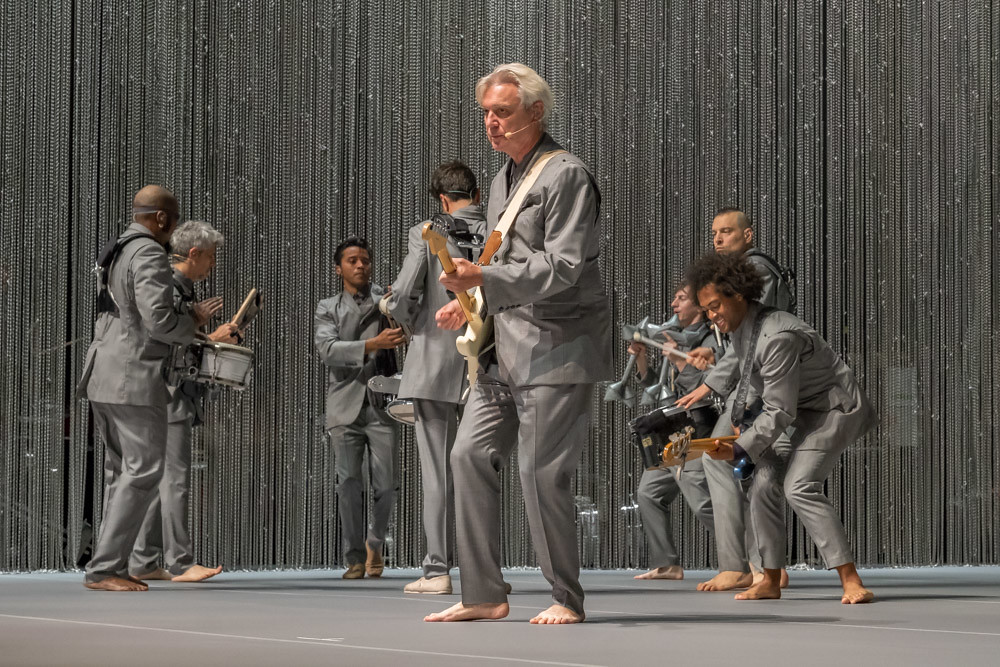
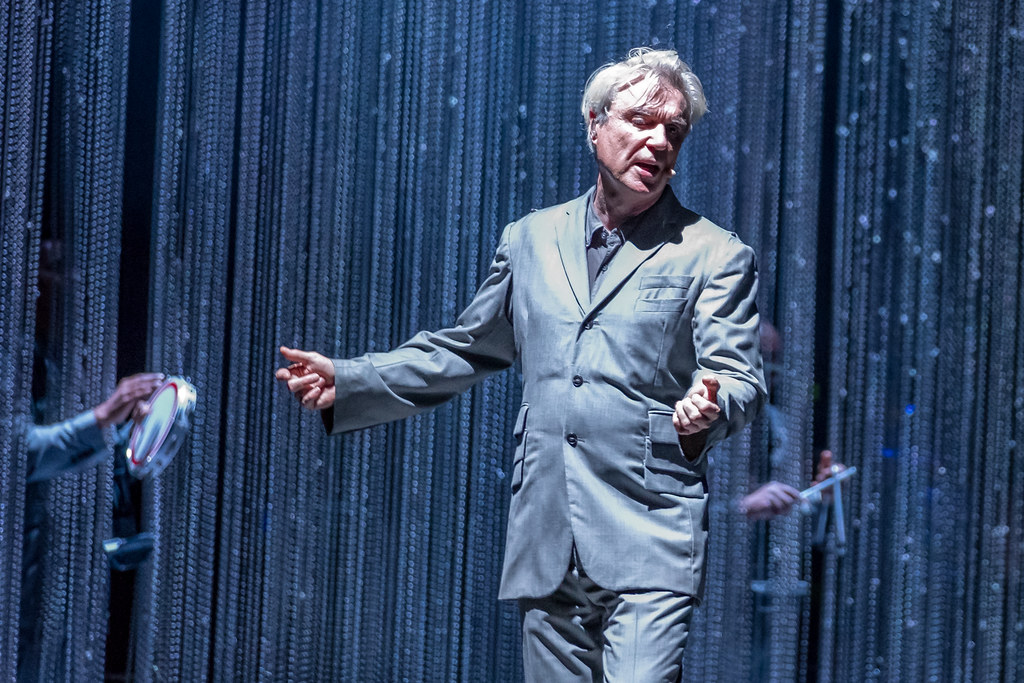
The lone track performed from Byrne's collaboration with St. Vincent was a funked out version of "I Should Watch TV," the band standing in revolving lines on the left side of the stage, Byrne isolated on the right. During breaks in singing, Byrne jogged up and down the stage, his hair flopping like an adolescent. "Dog's Mind" came next, which built to an echoing critique of modern politics and the notion of progress. This veered into Utopia highlight "Everybody's Coming to My House," which mixes gospel, funk, and new wave, and a strong message of hope and community in the face of brutality. In general, the audience remained seated during Byrne's more recent tracks, only standing for Talking Heads songs, which felt negligable when one considers the infectious energy of "Everybody's Coming to My House," and a killer bassline provided live by Bobby Wooten. Talking Heads's "This Must Be The Place (Naive Melody)" continued the emphasis on community and home, keyboard player Karl Mansfield effortlessly translating the track's synth interludes to the live stage. "Once In A Lifetime" garnered arguably the strongest reaction of the night, a giant communal sing along between Byrne, the band, and audience. Tracks from Fear of Music and Remain in Light sounded particularly magnificent when performed by a twelve piece, each original detail explored and fleshed out by the performers. The "Once In A Lifetime" refrain "same as it ever was," spoke ahead to the exploration of racism that was soon to occur.
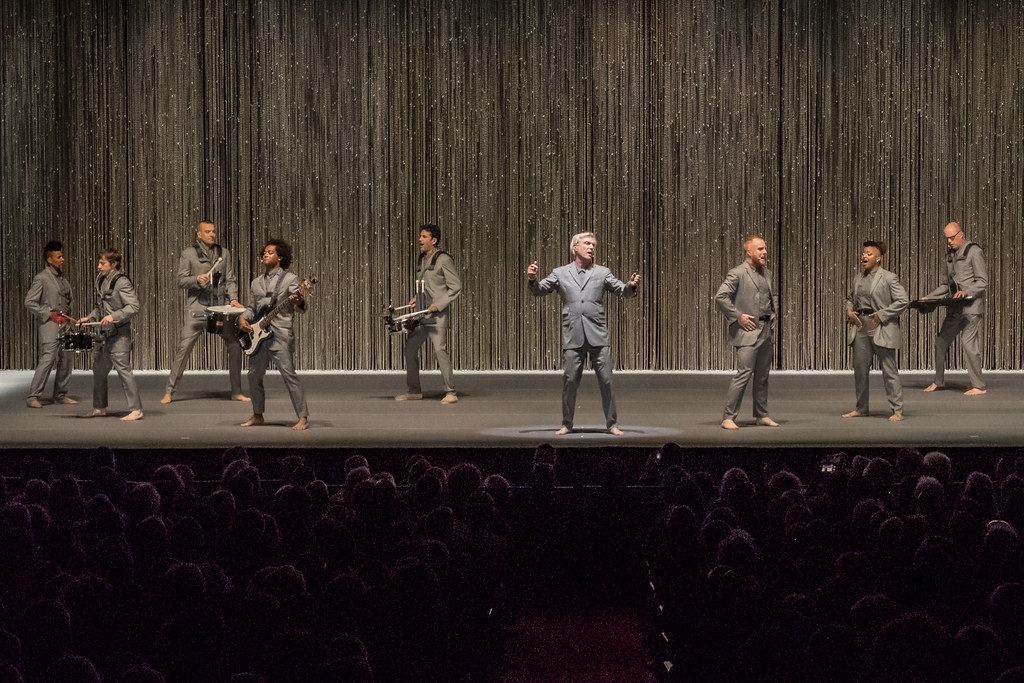
American Utopia's lilting, Samba-inflected "Doing the Right Thing" was followed by a performance of Fatboy Slim collaboration "Toe Jam" that contained a hint of zydeco, the band standing in a steady line at the center of the stage. Arguably the best adaptation of the night was given to the mighty "Born Under Punches (The Heat Goes On)," the bassline slightly tweaked by Bobby Wooten, and remarkable guitarist Angie Swan. The track sounded at once full-throated and eerily spectral, the Greek choir of Giarmo and Stone echoing Byrne's nonesense lyrics with interpretive dancing. After this, the band lay down akimbo across the back of the stage, bodies mowed down revealed by the rising of the stage lights-- one by one, they slowly stood up, performing Utopia opener "I Dance Like This." In this context, abruptly following an image evoking public death, "I Dance Like This" was transformed into a political anthem, the titular poor dancing made as statement of resistance. The eerie, mourning "Bullet" was accompanied with Byrne holding an overwhelming light at the center, musicians slowly revolving around the edges of the dimly lit stage. "Everyday Is A Miracle" emphasized the importance and wonders of daily life, even in spite of the constant threat of death, as did undervalued 2001 Byrne cut "Like Humans Do."
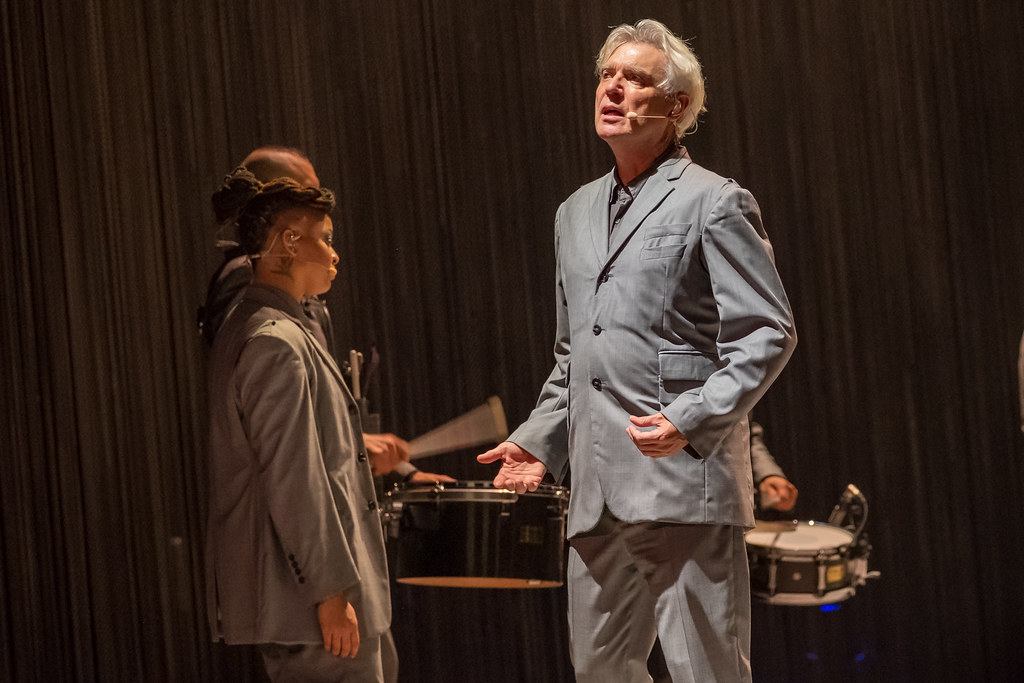
The Talking Heads track "Blind," from 1988's Naked was given the full calypso treatment it deserved, the band's shadows looming massive against the backdrop while they revolved around the stage. "Blind" was likely the most surprising Talking Heads inclusion of the night, but felt natural in the context of the setlist. Byrne closed the main set with "Burning Down the House," which felt like a moment of release for the performers, who stood in a solid line at the front of the stage, as well as the audience. After such a massive choreographic and musical undertaking, "Burning Down the House" was a more than worthy conclusion. The band and Byrne looked jubilant while they bowed and walked off the stage to raucous applause.
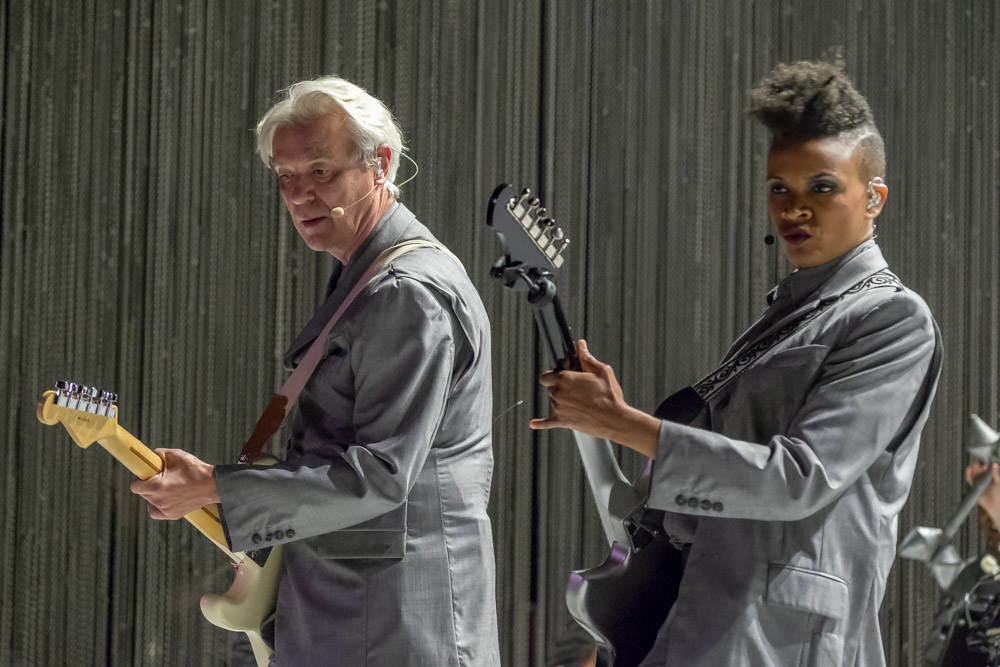
Several minutes later, after a massive ovation, the encore began with Here Lies Love track "Dancing Together," which was originally sung by the late Sharon Jones. Then came Fear of Music's "The Great Curve," which sounded remarkably tight but spontaneous, guitarist Angie Swan executing the off-kilter solo with a noteworthy panache. The band managed to bring the track's countless vocal parts, rhythms, and harmonies fully to life, which was a quite impressive feat. One more encore soon followed, the band regrouping to perform Janelle Monae's protest anthem "Hell You Talmbout," Byrne explaining that the song remained regrettably relevant today. For the next five minutes, Byrne, Simi Stone, Swan, and Wooten yelled out the names of black individuals killed by police, joined by swirling percussion and repetitions of "Say His Name," "Say Her Name." The rendition was deeply moving, a direct extension of the themes explored in American Utopia, although more expressly political in its refusal to let these names and lives be forgotten. Performing "Hell You Talmbout" was a necessary and striking political gesture for Byrne, who did not let the predominantly white audience ignore the ongoing public spectacle of black death, even during a frequently joyous live performance. Byrne's performance smartly alternated between strong political commentary and more celebratory numbers, unsuspecting audience members forced to engage with the failures and injustices of the American Dream.
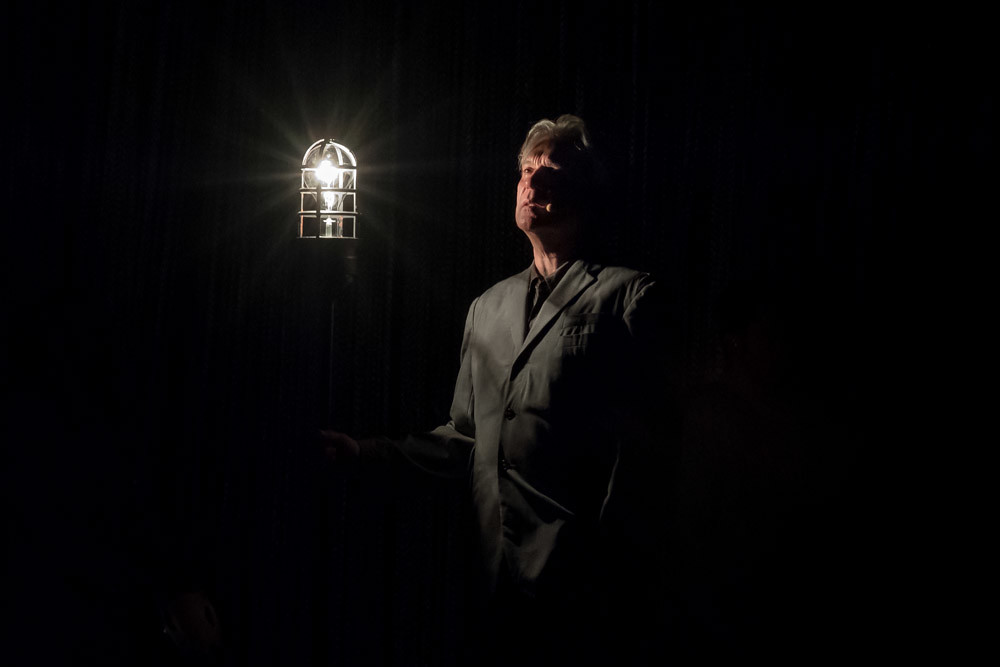
Day One of the Sasquatch! Music Festival brought stellar sets from David Byrne, Tyler, the Creator, Wolf Parade, Margo Price, and so much more.
Back in 2010, David Byrne and Fatboy Slim collaborated on the concept album and "disco musical" Here Lies Love, which tells the story of former First Lady of the Philippines, Imelda Marcos. Following award-winning runs in New York, London, and Adelaide, Australia, the project has now arrived in Sea…
Click here to RSVP on Facebook for a reminder to tune in!KEXP is honored to welcome David Byrne to our airwaves. The highly influential artist, and founding member of the Talking Heads will join Stevie Zoom for a guest DJ set, and to discuss his career and the musical, Here Lies Love, his collabor…